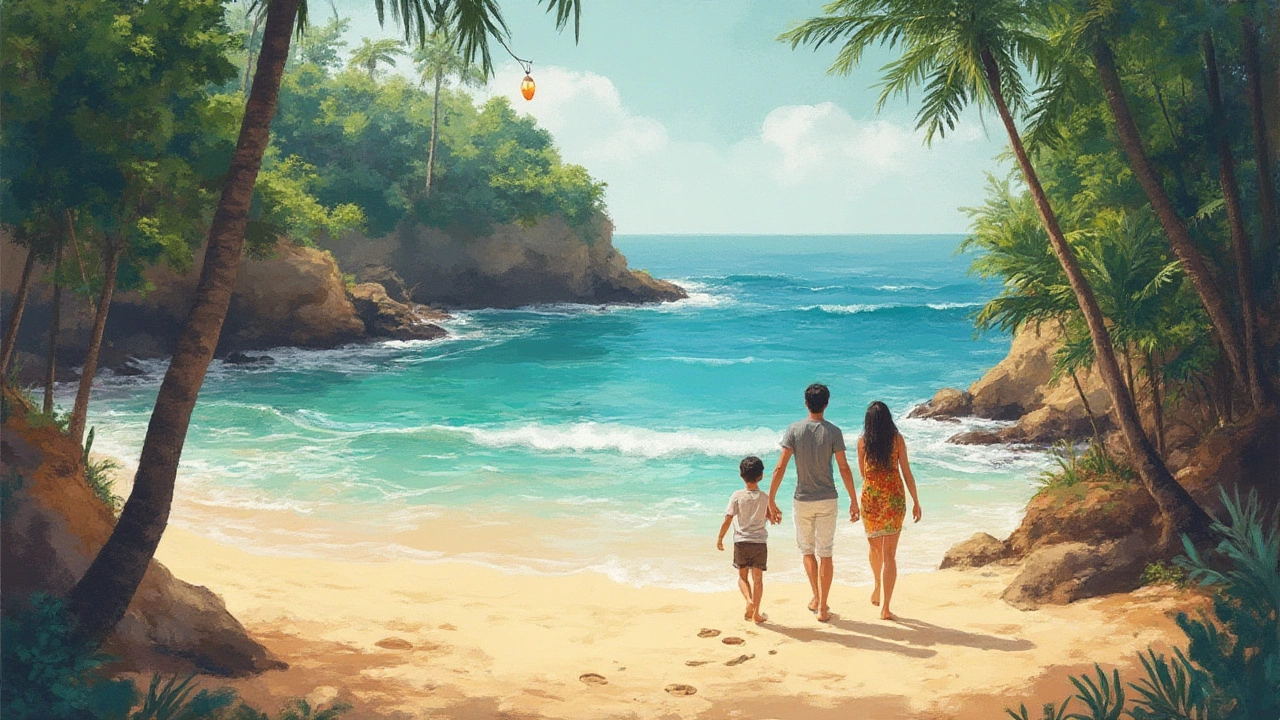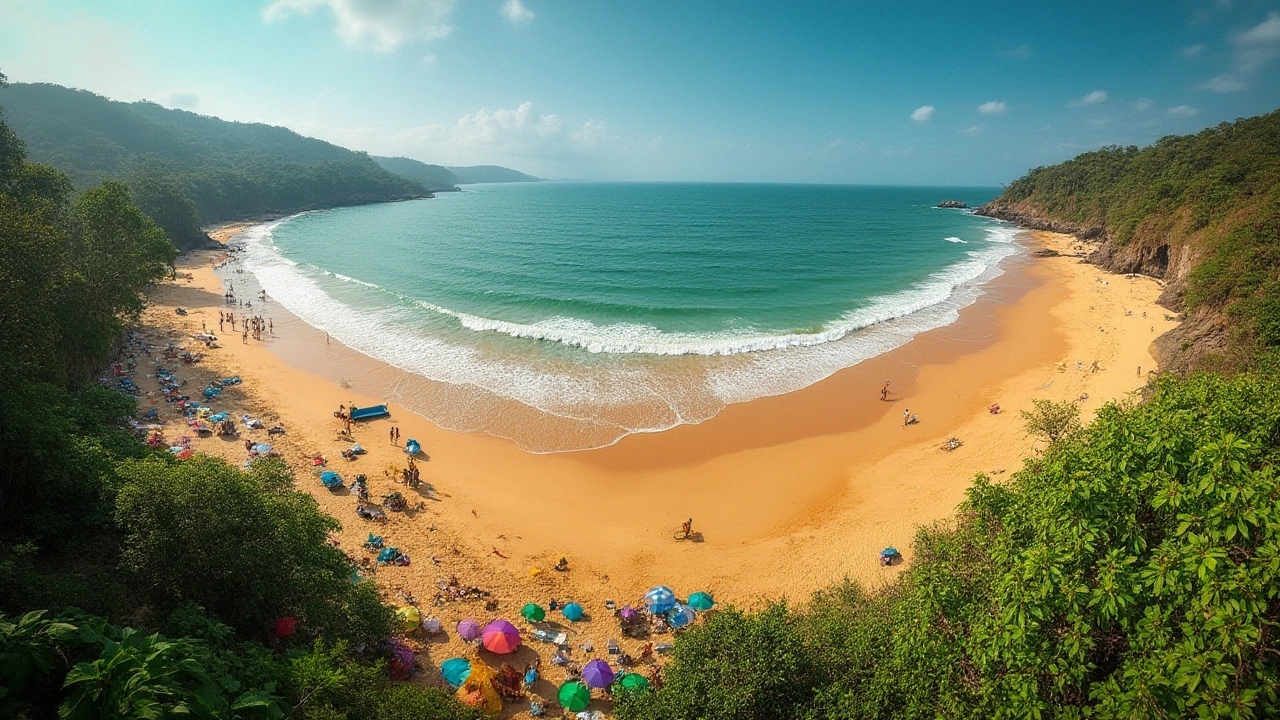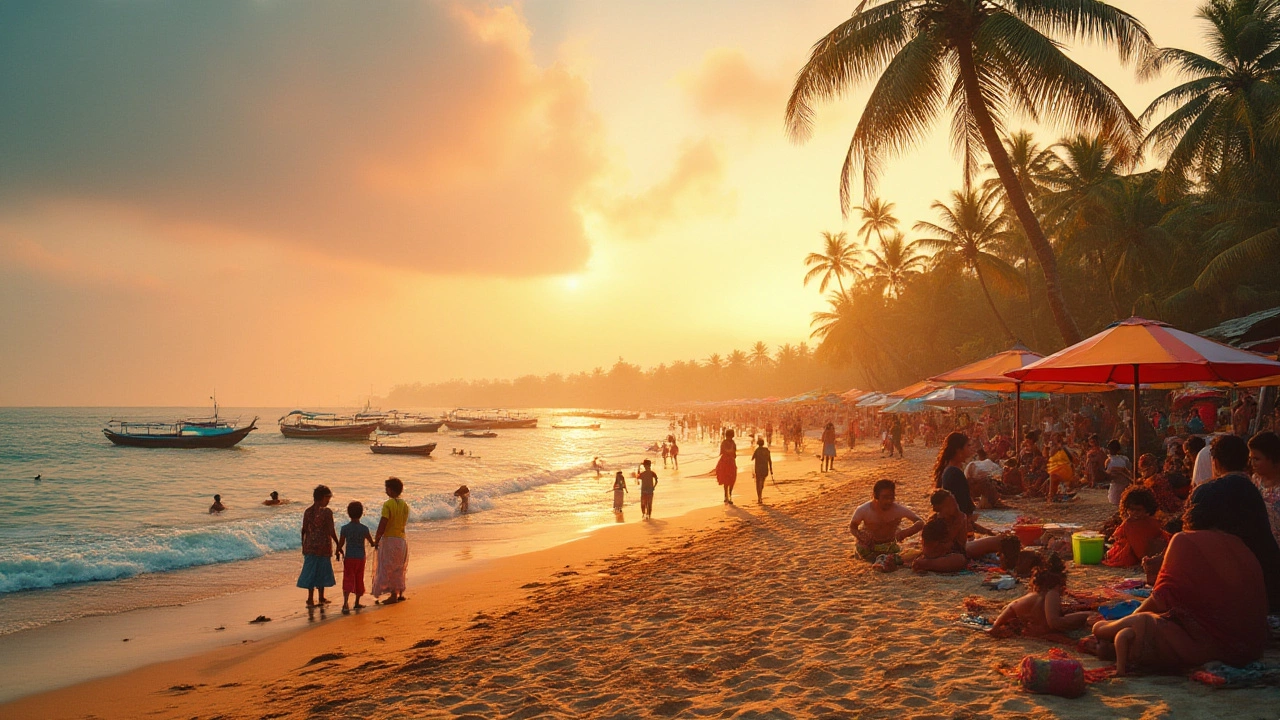India has some wild contradictions—you’ve got Himalayan peaks cloaked in ice, desert sand burning in Rajasthan, and out east, jungles echoing with monsoon frogs. But for millions of travelers, both Indian and foreign, it’s the dreamy coastline that seals the deal, the place you imagine when you picture your toes buried in sand, your hair a mess with salty wind, and a tang of the Arabian Sea on your lips. There’s one Indian tourist destination that pops into almost everyone’s head when you say ‘beaches’. And if you guessed Goa, you’re bang on. Why does Goa keep grabbing travelers’ imagination in a country bulging with 7,500 kilometers of coastline? It may be small—the size of a British county—but this pocket rocket of a state handles a whopping 7 million tourists a year, at least half of whom come purely for the beach magic. Time to unpack what makes Goa the beach capital of India and why you’ll bump into sun-seeking backpackers from Berlin sipping on coconut water alongside honeymooners from Bangalore.
How Goa Became Synonymous with Indian Beaches
Let’s set the record straight: Goa isn’t just randomly famous. Ever since the 1960s, when the hippie trails first found their way to Anjuna and made flower power as trendy as disco, Goa started its transformation. It was the state’s Portuguese past—400 years of colonial rule—that gave it a different rhythm from the rest of India, and European travelers surely noticed. It’s not just nostalgia though. The stats don’t lie: Out of the 28 famous Indian beaches promoted by the Ministry of Tourism, nearly a third are in Goa—names like Calangute, Baga, Vagator, Palolem, and Colva roll off the tongues of visitors as easily as fish sizzlers from beach shacks.
What keeps the crowds coming? For one, you’ve got the ideal backdrop: more than 100 kilometers of golden sand, split by palm trees, and little coves perfect for getting away from the holiday masses. The sunset views look like something out of an Instagram lifestyle reel. But dig deeper—it’s more than sand and sea. Goa’s got a party reputation, sure, but real magic is in details: the shacks serving vindaloo and feni, flea markets packed with tie-dye and silver, and the easy-going vibe that lets you be whoever you want for a week or two. Locals even joke that ‘Goa time’ is an hour behind—nobody’s in a rush, and it feels like the rest of India’s feverish hustle just melts away here.
If you’re worried about when to visit, here’s the deal: December to February is peak paradise mode. This stretch brings blue-sky weather, cool evenings, and the famous Sunburn Festival. Monsoon (June-September) turns Goa lush and wild, perfect if you’re not fussed about swimming but want green everywhere. The stats show the Christmas and New Year period attracts the highest number of international visitors. Here’s a taste of Goa’s beach stats, which might make you double-check your calendar:
| Goa Beach | Visitor Numbers Annually (Approx.) | Known For |
|---|---|---|
| Calangute | 1.8 million | Nightlife, water sports, crowds |
| Baga | 1.5 million | Music clubs, busy market |
| Anjuna | 1.1 million | Hippie heritage, flea market |
| Palolem | 800,000 | Cabana huts, calm sea |
| Colva | 500,000 | Family-friendly stretch |
Those numbers alone trump most Indian rivals. And the best part? Each beach has a totally different personality—party hub, yoga haven, or family safe space. Goa sort of morphs around you, matching your mood. Looking for an offbeat tip? Try Ashwem or Arambol up north if you want fewer crowds and quirky cafes.

Why Goa’s Beaches Stand Out—Beyond the Obvious
Let’s get honest: people don’t trek halfway across the world just for sun, sand, and a piña colada. They want memories and a place that sticks in their head long after they’ve unrolled their towel at home. Goa just gives you more of that. Unlike some ultra-commercialized beaches in Asia, there’s still wildness here—empty early morning shorelines, dolphins nosing close to the sand in places like Betalbatim, and shacks that feel like family-run secrets.
Party seekers usually hit Baga after sundown; the music pulses loud and you can bounce between karaoke and laser-lit nightclubs. But, early risers can see local fishermen haul in their fresh catch using nets strung together by hand. Don’t miss the boat tours that take you out to watch dolphins—pro-tip, go at sunrise for the best chance and skip the noisy crowds. Traveling with family or want it super chill? Colva and Majorda give off a safe, relaxed vibe, and lifeguards are always on patrol.
There’s a new wave of interest too: eco-travelers are finding Goa irresistible. Turtle nesting programs on Morjim Beach protect endangered olive ridley turtles—if you time your visit between October and March, you might witness tiny hatchlings making their way to the sea. Some local businesses have ditched plastic straws and introduced composting; you’ll notice signs asking visitors to keep the sands pristine. Digital nomads are now saying Goa’s wifi, lattes, and yoga studios rival Bali’s—everyone from copywriters to coders can set up a workstation in a breezy cafe. Even wellness retreats are popping up everywhere, blending ashram-style meditation with sea views.
Food’s a huge deal, obviously. You’ll find prawn balchao and spicy sorpotel that might make you weep with happiness, and don’t forget the kingfish rava fry—locals swear it’s best fresh-off-the-boat at beach stalls on Palolem or Mandrem. For vegetarians, Goan poi bread and coconut curries are gamechangers. Oh, and that safety myth? Compared to many Indian metros, Goa is actually pretty safe for solo women out at night, thanks to tourism police and an open-minded local attitude. Just keep an eye on your valuables, and you’re sorted.
If you want the ultimate insider hack, skip the hotels and grab a beachside homestay. You’ll get homemade breakfasts, chats with locals about the monsoon tides, and tips on secret beaches only the village kids know. Duck into Old Goa for a culture shock; grand cathedrals and ruins are leftovers from the Portuguese days, and walking here at dusk feels like stepping back in time. Every traveler ends up with their own Goa playlist—maybe it’s the distant throb of trance, calls to prayer from a roadside shrine, or just the swoosh of the tide in the dark.

Tips and Stories for Your Next Beach Trip to Goa
So you want to get the most out of your trip—not just the obvious stuff. Here’s what you need to know: Goa is best savored slow. You could do the checklist (Calangute, Anjuna, Dona Paula), but you’ll only scratch the surface. Wake up early to see fishermen at work in tiny villages like Agonda or visit the Saturday night markets in Arpora, packed with live music and Goan crafts. Don’t be shy about renting a scooter; it’s the fastest way to hop beaches and catch sunrise views from Chapora Fort. Just don’t forget your helmet—the police have started to fine tourists, and the roads can get hectic.
If you’re coming with friends, try water adventures. Parasailing, jet-skiing, windsurfing—they’re all popular on Baga and Candolim. For quieter thrills, grab a kayak and paddle through mangroves near Chorao Island. Or, if you’re a diver, check out the shipwrecks and coral reefs off Grande Island—some reviews compare them to those off Thailand. If you’re traveling solo, Goan hostels are a godsend; they’re full of other travelers, offer yoga sessions every other morning, and host movie nights on giant outdoor screens. You’ll make friends without even trying.
A quirky fact: Goa is the only state in India where you can legally ride the sunset on a beach with a beer in hand. The local drink, cashew feni, burns a little but it’s tradition. Women travelers often find the local markets have the best deals around noon. Haggling is expected—start at half the quoted price, and do it with a grin. For culture lovers, check if your dates match with the Carnival in February or the Sao Joao Festival (June); both fill the streets with music, costumes, and wild water fights. You can usually join in, even as a tourist.
Avoiding the crowds is possible, even in high season. Venture south beyond Palolem, towards Butterfly Beach or Galgibaga; most people stick to the north, but the south is where you’ll find that Robinson Crusoe vibe. Another pro tip: visit the spice plantations inland for a change—these still supply many local restaurants and offer hands-on demos about growing nutmeg, pepper, and cardamom.
To make your visit smooth, carry sunscreen (the local stuff often has a strong scent), insect repellent, and always have a backup phone charger. ATMs sometimes run dry in small villages, so grab some cash in Panaji or Margao. English is widely spoken, but a thank-you in Konkani—“Dev Borem Korum”—gets a wide smile. Internet is almost everywhere; beach cafes and homestays post their wifi passwords openly.
Last but not least, protect Goa for the next wave of travelers. Say no to single-use plastics, refill your bottle at stores offering filtered water (look for a blue sticker), and never disturb the Goa beaches’ wildlife. The lifeguards are friendly, but keep an eye out for red flags—currents get tricky after rain. And remember, a beach is best enjoyed with no agenda: sink into a hammock, sip a ginger tea, and let the rhythms of India’s favorite coast do the rest.
